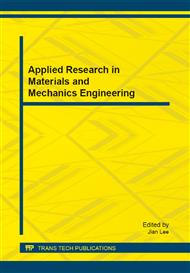p.61
p.65
p.71
p.77
p.83
p.89
p.95
p.101
p.107
Eddy Current Modeling for the Nondestructive Evaluation of Stress Intensity Factor
Abstract:
In this paper, a nondestructive technique is used as a tool to control cracks and microcracks in materials. A simulation by a numerical approach such as the finite element method is employed to detect cracks and eventually; to study their propagation using a crucial parameter such as the stress intensity factor. This approach has been used in the aircraft industry to control cracks. Besides, it makes it possible to highlight the defects of parts while preserving the integrity of the controlled products. On the other side, it is proven that the reliability of the control of defects gives convincing results for the improvement of the quality and the safety of the material .
Info:
Periodical:
Pages:
83-88
Citation:
Online since:
August 2014
Authors:
Price:
Сopyright:
© 2014 Trans Tech Publications Ltd. All Rights Reserved
Share:
Citation:


